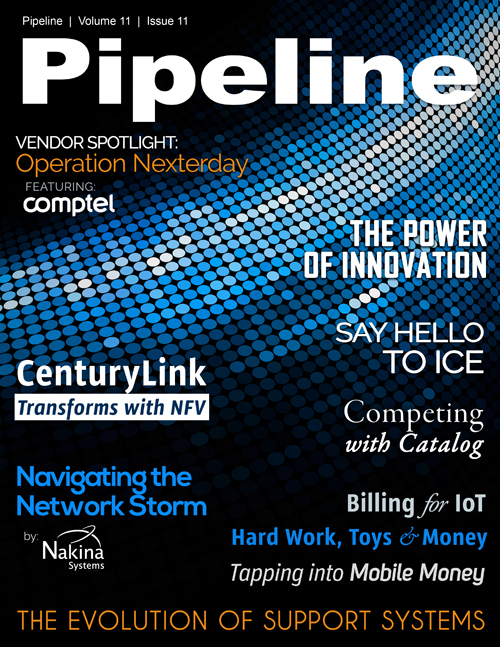CenturyLink on Managing the Transformation to Virtualization
Network vendors will likely need to re-write their Virtual Network Functions (VNF) or risk being outpaced by start-ups that natively develop for cloud or NFV.
When the next network function arrives, it can run that too. This is the real value back to the business: Deploy infrastructure once and reuse it for a range of products. NFV-based services
will look a little different than traditional network services using large iron. Many VNFs will only serve a single customer. A mental shift has to happen with engineers certifying VNFs that are
expecting a single VNF to keep pace with physical hardware. That really wasn’t the intent nor possible in most cases. Instead, you’ll see VNFs and the workload spread across cheap commodity NFV
clusters.As an organization adopts NFV, it’s important to realize not all telecom services are candidates for the transition. Start with low hanging fruit and work toward complexity. While the physical layer becomes simplified and homogeneous, the complexity and heterogeneity simply shifts up the stack. Sorry, I believe the simplicity of NFV and SDN is overhyped. Simplicity is really a customer benefit. Operationally, SDN and NFV introduce new problems while solving for others. Root cause analysis will need to factor in the new abstraction layers and their dependencies. Perhaps new monitoring tools will need to be deployed in order to properly manage clusters in production. The impacts will affect the entire OSS stack and that subject is an article in itself. Customers can benefit with lower-priced services, easier consumption models, and one stop shops as providers are able to deploy new services faster. In some cases, services may seem more stable, with smaller and less frequent maintenance windows and faster mean time to repair. Providers will expose APIs and portals giving users more control of the services they consume and enable new levels of automation. We’ll even see applications riding on networks asking for metrics, routing/switching information and even telling the network to provision or modify services. Developers will build new composite services on top of “Networks as a Service” creating a mash-up of network services and other web services. While these features are attractive for larger enterprises, smaller companies really don’t want to mess with their services that often, if at all. Smart architects and product managers will see this as an opportunity to deliver smart platforms that predict and resolve their own failures and make new service recommendations to users. Those recommendations may be contextually driven based on how companies use services, the patterns of usage, and even subscribers credit limit. Such capabilities will be derived from deeply integrated Big Data platforms. Analytics isn’t new to providers, but today most analytics are reactive and the jump will be to predictive and prescriptive. The Big Data domain and the advances in machine learning will play an increasing integral role in innovative SDN platforms.
While many herald the cost benefits of NFV based services, it may not be realized if you procure your NFV platform or its components from common enterprise vendors. A similar phenomena happened in cloud when ISPs and data center companies tried to imitate Amazon. Amazon invested in its engineering talent and they built everything from the ground up, while most providers invest in integrated vendor solutions which come at a year-over-year premiums in order to get to market faster and have feature parity of the leaders on day one. That cost is passed to the user and margins remain thin. Companies like Amazon, Google, Facebook and Twitter are considered “unicorns” due to the incredible feats and pace of innovation which rarely involve the vendors you and I work with. When they do, their massive scale helps rationalize hardware vendors to build custom hardware and processors. While tempting to imitate, it’s really hard to replicate. Hence, the name of the mythical animal. Nevertheless, they serve as inspirational studies when starting down the NFV and SDN path.
CenturyLink has an innovative engineering team which has turned its focus to the network leveraging their deep knowledge in cloud computing, modern software architectures and big data. In 2012, CenturyLink began the journey and today the NFV platform is deployed in 36 locations across 7 countries running production “carrier” grade services to enterprises and consumers. The transformation will continue expanding from the IP core out to our customers’ premises. Enabling more on-demand services to customers beyond CenturyLink’s data centers is a key part of our transition. Combining both cloud and network operations, we see the need to reinvent ourselves as an agile organization, with the flexibility to innovate much more quickly. We are pushing hard to keep up with today’s rapid pace of innovation, and consistently meet ever-evolving customer demands.



















